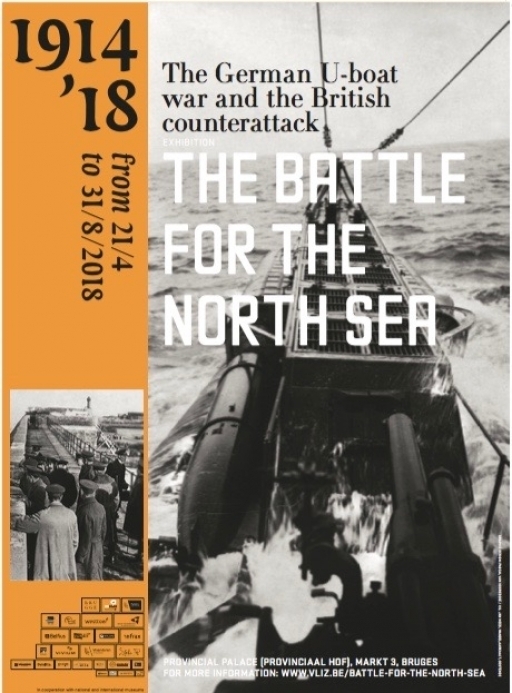The struggle waged between the British navy and the German U-boat fleet based in Flanders during the First World War is explored in a new centenary exhibition, starting in Bruges on April 21.
Its opening has been timed to coincide with events marking the 100th anniversary of the Zeebrugge Raid in 1918, the Royal Navy’s bold, but unsuccessful, operation to seal off the Belgian coast to U-boats while the Allied armies were battling to contain Germany’s spring offensive.
Submarines sailing from the occupied harbours of Bruges, Zeebrugge and Ostend menaced the shipping on which the British war effort depended. As Winston Churchill noted: “The only thing that ever really frightened me during the war was the U-boat peril.”
The exhibition, 1914 ’18 The Battle for the North Sea, has set its sights on raising awareness of this critical campaign, assembling artefacts and documents from leading museums in Britain, Germany and Belgium.
11 Victoria Crosses
And for the first time, all eleven Victoria Crosses awarded by Britain for the St George’s Day attacks on Zeebrugge and Ostend – on 23 April 1918 – have been united for display outside the UK.
The exhibition’s curator is the Belgian marine archaeologist, Tomas Termote. His discovery of the near intact wreck of a German submarine, UB-29, off the Flanders coast in the summer of 2017 gives the forthcoming exhibition added topicality.
Four years in the planning, the exhibition was conceived by Carl Decaluwé, the Governor of West Flanders, and himself a passionate advocate of maritime history.
Amid the continuing Great War commemorations in Belgium, he noted: “What always strikes me in the overview of all these initiatives in our country, is that little or no attention is paid to the war events at sea. Despite that, the war at sea was of crucial strategic importance for the Western Front.
“What few people know is that our Belgian seaports, Ostend and Zeebrugge, played an important role during the First World War. The German Army had converted our North Sea coast into one large fortified zone. For the first time in warfare, submarines became an imposing weapon.”
The chosen venue for the exhibition – the Provincial Courthouse (Provinciaal Hof) in the heart of Bruges – is itself a symbol of the submarine war. It served as the command and control centre for Germany’s U-boat operations in the southern North Sea, the Channel, Bay of Biscay and beyond.
The U-boats of the Flanders Flotilla were based inland at Bruges, passing through canals and sea locks to reach the open sea at nearby Zeebrugge and Ostend. British forces did succeed in sinking two blockships in the canal entrance at Zeebrugge on 23 April 1918, but failed to obstruct it entirely.
“The artefacts and documents will not only give a glimpse into the technology and types of U-boats but also an idea of the human beings behind these machines,” curator Thomas Termote says. “As the U-boat was the only weapon which nearly forced Great Britain to the brink of surrender, the Royal Navy brought everything in its arsenal to destroy this threat.”
1914 ’18 The Battle for the North Sea is at the Provinciaal Hof (Provincial Court House), Markt 3, Bruges from April 21-August 31. The exhibition is reviewed here, in Centenary News.
Tomas Termote is author of ‘War Beneath the Waves: U-boat Flottilla Flandern 1915-18’.
Images courtesy of Flanders Marine Institute/Tomas Termote/Carl Decaluwé
Posted by: CN Editorial Team
